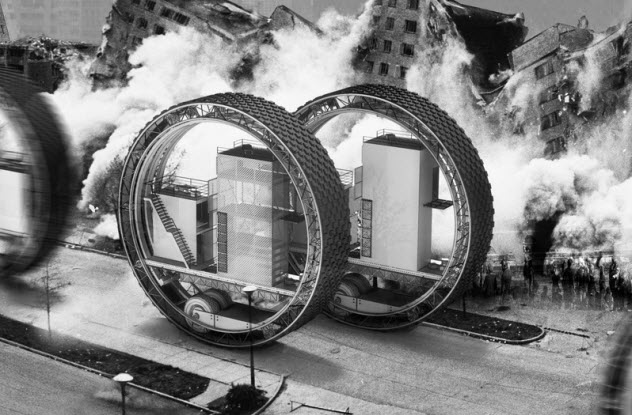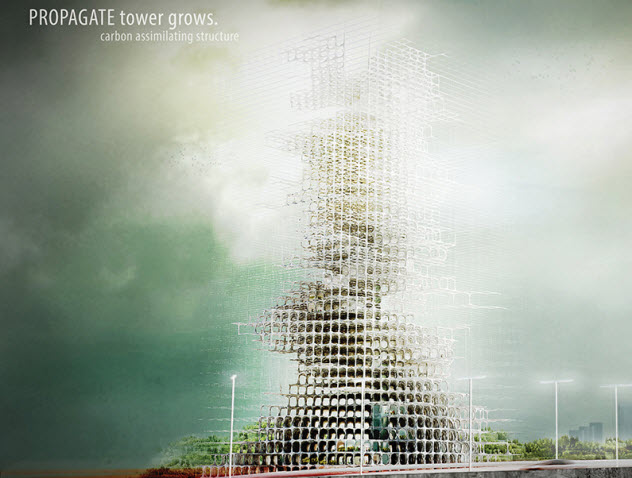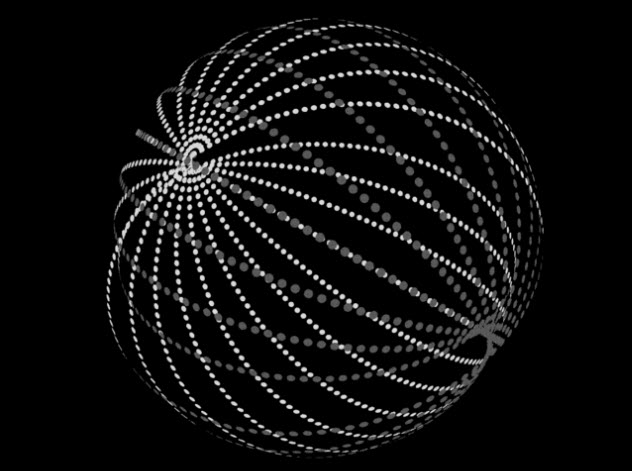 Movies and TV
Movies and TV  Movies and TV
Movies and TV  Creepy
Creepy 10 Eerie & Mysterious Ghosts of the Pacific Coast
 Weird Stuff
Weird Stuff 10 Typos That Accidentally Changed History
 History
History 10 Times Trickery Won Battles
 Technology
Technology 10 Awesome Upgrades to Common Household Items
 Misconceptions
Misconceptions 10 Hilarious (and Totally Wrong) Misconceptions About Childbirth
 Weird Stuff
Weird Stuff 10 Warning Labels That Exist Because Someone Actually Tried It
 Health
Health Ten Confounding New Inventions from the World of Biomedicine
 Creepy
Creepy 10 Death Superstitions That Will Give You the Creeps
 Movies and TV
Movies and TV 10 Movies That Get Elite Jobs Right, According to Experts
 Movies and TV
Movies and TV 10 Most Realistic Medical TV Shows of All Time
 Creepy
Creepy 10 Eerie & Mysterious Ghosts of the Pacific Coast
 Weird Stuff
Weird Stuff 10 Typos That Accidentally Changed History
Who's Behind Listverse?

Jamie Frater
Head Editor
Jamie founded Listverse due to an insatiable desire to share fascinating, obscure, and bizarre facts. He has been a guest speaker on numerous national radio and television stations and is a five time published author.
More About Us History
History 10 Times Trickery Won Battles
 Technology
Technology 10 Awesome Upgrades to Common Household Items
 Misconceptions
Misconceptions 10 Hilarious (and Totally Wrong) Misconceptions About Childbirth
 Weird Stuff
Weird Stuff 10 Warning Labels That Exist Because Someone Actually Tried It
 Health
Health Ten Confounding New Inventions from the World of Biomedicine
 Creepy
Creepy 10 Death Superstitions That Will Give You the Creeps
 Movies and TV
Movies and TV 10 Movies That Get Elite Jobs Right, According to Experts
10 Mind-Blowing Examples Of Hypothetical Architecture
Imagine you were drawing the city of the future. What would it look like?
Most of us would probably be content to draw a few flying cars and maybe a Back to the Future–style hoverboard, but most of us aren’t architects. Over the years, plenty of architects have found time to sit down and decide exactly what they’d like to see in a hypothetical future society. The results range from mind-blowing to downright insane.
10Moving Skyscrapers

Have you ever found yourself gazing gloomily out your apartment window, wishing you could just move somewhere else? Polish architects Damian and Rafal Przybyla apparently have. Only instead of doing something boring like calling the movers, they plan to do it in the most badass way possible. They would motorize the entire building.
Created in 2012 for the prestigious eVolo Skyscraper Competition, their “Migrant Skyscraper” is both ambitious and insane. Set inside a gigantic tire, the building is surrounded by a strip of green space that conceals a handy biofuel engine. The moment that civil war or an irritatingly loud street party breaks out, the residents simply power it up and shoot off in their mega-wheel to a new location.
Designed for people living in regions prone to armed conflict, the skyscrapers are completely self-sufficient. There’s room for livestock grazing and crop growing around each building, and water is recycled to keep residents alive on even the longest journey. It also ensures that civilian casualties are kept to a minimum if another conflict like the one in Syria breaks out.
9Flying Farms
You may have heard of vertical farming. Instead of spreading our agriculture outward, vertical farming lets us aim upward, creating large skyscraper farms that tower over our cities. Vincent Callebaut Architects wants to go one better. In 2010, they outlined a proposal for farms that are contained in gigantic, self-powered airships.
Known as “Hydrogenase,” the farms would be self-sufficient airborne villages. One-third of their enormous bulk would be dedicated to growing algae. Another chunk would contain seaweed beds capable of absorbing CO2 and pumping out enough hydrogen gas to keep each ship afloat. Amid all this, a small group of humans would wander, living out their lives in carbon-free serenity many kilometers above the Earth.
For those of us still on the ground, the Hydrogenase would look like impossible green zeppelins turned on their sides. Below them, water-based counterparts would crowd across the ocean, capable of combining with their airborne equivalents to form a single tower. Given enough funding, the architects think they could become a reality as early as 2030.
8A Growing, Pollution-Eating Tower

With all the current hype about climate change, you’d be hard-pressed to find anyone who didn’t agree that our atmosphere has too much CO2. But how do we go about getting rid of it? Canadian architects YuHao Liu and Rui Wu think they have the answer. In 2014, they proposed a tower that sucks carbon out of the air and uses it to make itself bigger.
It sounds like the very limits of sci-fi imagining, but their idea is at least based in practical science. With the cost of removing carbon from industrial sites so high, experts are already looking at processes that would transform it into a usable building product. Liu and Wu’s great leap of imagination is to hypothesize that this product could then build itself. Using a basic framework, they’d create a tower that collects and stores this carbon product. Stuff like wind and rain would then decide in what form and direction this product was placed.
The result would be a tower that seems to grow and take shape according to its surroundings. Like rocks blasted into strange shapes by a million years of strong, eroding winds, the tower would become a kind of carbon sculpture, a practical and weirdly artistic way of purifying our atmosphere.
7Living Icebergs
Antarctica—the coldest, windiest, highest, and driest continent on Earth—has never been properly settled by humans. This poses a challenge for scientists hoping to study there. In such a pristine environment, is it ever okay to leave any traces of human habitation? A couple of years ago, David Garcia Studio (now MAP Architects) came up with a solution. They drew up plans to hollow out an iceberg to create a research base that would one day simply melt away.
Their plan called for a super iceberg roughly the same size as the 2.5-square-kilometer (1 mi2) Monaco with a depth of at least 25 meters (80 ft). Once found, this giant chunk of ice and snow would be carved by diggers already in Antarctica, creating a vast, hollowed-out chamber deep beneath the surface. Two access ramps would lead to a central tunnel, from which some 18 different caves would radiate, like the arms of a snowflake. There would be separate chambers for sleeping, cooking, and showering, along with an auditorium, hospital, and garbage space. All told, 100 people could be stationed in this one iceberg, protected from the harsh Antarctic winter by layers of igloo-like snow.
In their plans, the architects state that the base would last between 7 and 10 years, at which point it would melt away, leaving no trace behind. Their design was so impressive that the concept of these living icebergs is already getting serious international attention.
6Invisible Buildings
With architecture, a supposedly good idea today could be considered hideous tomorrow. In the late 1940s, brutalism seemed like the stuff of the future. Today, it’s a style hated by just about everyone. One branch of hypothetical architecture proposes getting around this problem by making our buildings invisible.
We mean that literally. In a proposal for a country barn by architects stpmj, every surface would be a highly reflective angled mirror. With no joins visible, it would look like a ripple in reality, a strange place where the light bent oddly. Others have followed a more high-tech route. In 2013, South Korea gave the go-ahead for its Infinity Tower, a skyscraper covered in LED screens that would project images of its surroundings so seamlessly that the building would appear to vanish when activated.
The idea of using highly reflective glass in architecture is nothing new, and there are plenty of buildings already that look nearly invisible on a bright day. But many are interested in taking it further. If the Infinity Tower ever gets built and is a success, we may enter a future where entire chunks of the city around us can vanish at the push of a button.
5Floating Cities

You’ve probably seen Star Wars, and you probably remember the floating “Cloud City” in The Empire Strikes Back. But you may not know that it was based on a real architectural concept. In the mid-20th century, polymath Buckminster Fuller was challenged by a wealthy Japanese patron to design a city that could float on Tokyo Bay. “Bucky” went one step further. He designed a city that could float in the sky.
Known as “Spherical Tensegrity Atmospheric Research Stations,” or “Cloud Nines,” Fuller’s proposal was somewhere between genius and lunacy. Using the same ultralightweight building material he intended for his geodesic domes, Fuller planned a 1-kilometer-wide (0.5 mi) sphere. According to his calculations, this geodesic sphere would weigh only a fraction of the weight of the air inside it. If he could gently heat this internal air via solar panels or human activity, it’d only take a shift of 0.6 degrees Celsius (1 °F) from the air temperature outside to make the sphere bob off into the sky like a helium-filled party balloon.
Bucky’s plan was to tether his Cloud Nines to mountains via cables or just let them drift around in the atmosphere, allowing those inside to see the world. Although none were ever built, his designs influenced a generation of sci-fi writers.
4Sound-Eating Energy Towers

While some of us love the sounds of city life, others become seriously depressed by all the noise. If you’re one of the latter, then we’ve got some good news. In 2013, a group of French architects designed a tower capable of absorbing sounds in an urban area. Their plan: to convert those sounds into energy with which to power our cities.
Located next to busy roads, their “Soundscraper” would be covered in a kind of elastic skin designed to absorb vibrations. These vibrations would be mined for kinetic energy in specialized cells designed to convert this energy into electricity. The harvested electricity would then be shot into the city’s grid. The team estimated that a single tower could power 10 percent of Los Angeles.
If you stood beside one of their Soundscrapers, it would feel like you were hearing the entire world through earmuffs. Traffic noise would be deadened, and the tower itself would never stand still, noticeably vibrating with absorbed kinetic energy.
3A Sun-Stealing Swarm Of Deep Space Mirrors

After seven examples of towers and living icebergs, it’s time to leave Earth behind, floating high above the stratosphere like an untethered Cloud Nine. Imagine our society has become so evolved that we need every ounce of energy we can possibly get to keep going. Our best answer might be to encase the Sun in a gigantic, energy-harvesting sphere.
First seriously proposed by Princeton physicist Freeman Dyson in 1960, a Dyson Sphere would encase the Sun inside a globe of inwardly turned solar panels, allowing us to steal every ounce of its ferocious energy. At least, that’s the idea. According to Popular Mechanics, such a sphere would be highly unstable and prone to collapse. But there is another, related concept that could very well become a reality. We could build a Dyson Swarm.
Like the Sphere, the Swarm would be made out of billions of advanced solar panels. Unlike its ancestor, though, the Swarm wouldn’t be fixed. Instead, its mirrors would individually combine to create a dense cloud orbiting our Sun, like bees buzzing round a hive. Collectively, these little cells would absorb nearly all of its solar energy.
The power from such a creation would be phenomenal. We could power a gigantic empire straddling our solar system with a fraction of the energy we’d collected. (This would be doubly useful as we’d probably have to dismantle Mercury, Venus, Earth, and Mars to build it.) Some physicists are so convinced that building a Swarm is the logical move for an advanced civilization that they’re actively searching the skies for evidence of them. Finding one would prove that we’re not alone.
2A Star-Swallowing Computer

On the other hand, our future descendants might not want to conquer the solar system because the principle of a Dyson Swarm can be used to build something much more tempting: a gigantic supercomputer capable of giving every single human their own tailor-made paradise to live in forever.
Known as a “Matrioshka brain,” this star-sized supercomputer may well be why we haven’t found intelligent life yet. Like a Dyson Swarm, it would enclose a star, harvesting its energy. Unlike the Swarm, it would use this energy purely to create a virtual paradise into which our entire species could upload itself. Imagine The Matrix if Neo spent the entire movie floating around a beautiful landscape, living out every single one of his fantasies. That would be life in a Matrioshka brain, only we would never get old, never die, and never experience anything but happiness. It would be like spending eternity in a nonjudgmental heaven.
According to the people who consider these kinds of things, a Matrioshka brain wouldn’t need to be that big. Future space architects could build one around a red dwarf, which would have only 7.5 to 50 percent of the mass of our Sun, and still power their virtual paradise for a staggering 10 trillion years.
1A Mobile Solar System
Sometimes, architecture, engineering, and imagination collide to produce truly spectacular results. Perhaps the most spectacular is the idea of the Shkadov Thruster.
Another space-based megastructure, the Shkadov Thruster would be significantly easier to build than either a Dyson Swarm or a Matrioshka brain, and it would be potentially even cooler. A colossal, arc-shaped mirror floating in space, it would hang with its concave side facing the Sun. If placed where the Sun’s gravity is balanced by the outward pressure of all the radiation emanated by the Sun, the Shkadov Thruster would allow us to move our entire solar system.
The concept works by having all that solar radiation bounce off the curved mirror and push back at the Sun. Popular Mechanics claims that this would result in a tiny net thrust, enough to set our Sun and everything in its orbit cruising around the galaxy. Or nearly everything. To build such a massive engine, we’d probably need to completely dismantle Mercury.
Although a Shkadov Thruster wouldn’t make any noticeable difference for many millions of years, it would eventually speed up our solar system enough to make deep space exploration possible. After a few billion years, we’d have built up enough speed to completely exit the Milky Way in search of adventure.
Unlike some of the projects on this list, we already have the know-how for making a Shkadov Thruster. Although the scale of the project is currently holding us back, it’s totally possible that one day we humans will be able to go joyriding around the universe.








